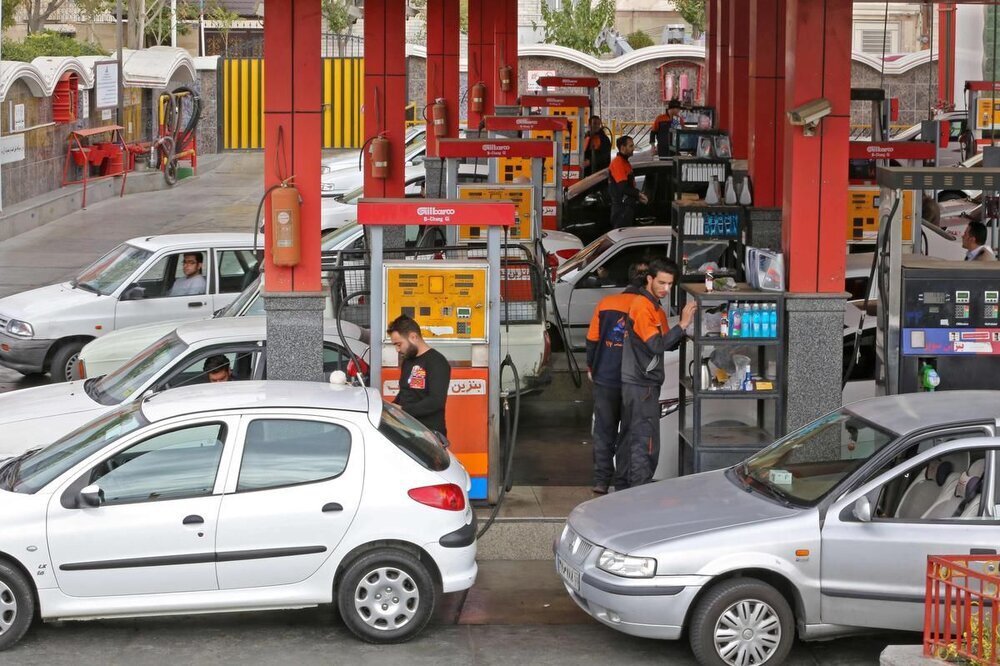Iran’s gasoline rationing scheme: from policy to practice

TEHRAN – These days last year, Iranians were surprised by the sudden news of the implementation of a program for rationing gasoline and also the increase in the fuel prices.
In a drastic policy shift on November 15, 2019, the Iranian government partly eliminated subsidies on gasoline and started rationing the highly subsidized fuel, saying it was planning to use the revenues for supporting underprivileged families.
Over the past few decades, the changes in the Iranian government’s fuel supply policies have been due to a series of reasons which include controlling consumption through non-price methods, preventing smuggling, and increasing exports, reducing government subsidy costs, preventing dependence on fuel imports and finally, saving the environment and controlling air pollution.
Now that a year has passed since the implementation of the government’s rationing scheme, the Tehran Times takes a look into the outcomes of the scheme to see how much the government has been successful in realizing the goals intended for this program.
To help us with the matter, energy expert and the Chairman of Iran Chamber of Commerce, Industries, Mines and Agriculture (ICCIMA)’s Energy Committee Hamidreza Salehi also provided us with his insights.
Reducing consumption and increasing exports
One of the major goals of the rationing program was to reduce consumption and to cut the dependence of the country on importing gasoline and even to make Iran an exporter of the product.
According to Salehi, prior to the rationing scheme, daily gasoline consumption in Iran hovered around 90 million liters while the country’s refineries hardly produced enough gasoline to meet the domestic demand and so despite having great hydrocarbon resources Iran was an importer of gasoline.
After the implementation of the program in November 2019, average daily gasoline consumption fell to 75 million liters in December, and later the outbreak of coronavirus in early March and April led to even further decline in consumption so that in some days of April the figure even fell to about 22 million liters.
This created a great opportunity for the government to export the surplus fuel to other countries so that gasoline became one of the top exported commodities during the first half of the current Iranian calendar year (March 20-September 21).
A look into the government’s performance and the outcomes of the program, considering the mentioned two goals we can fairly say that although most of the decline in the consumption has been due to pandemic-related travel restrictions, still the results are significant.
People and pollution
A program on the national scale can be considered successful when it brings about general satisfaction; that is when the masses are happy with the results of the so-called program.
“People should see the positive results of the rationing program in their lives to accept it as a positive act; for example, new jobs should be created with the revenues earned from the exports and subsidies, people’s purchasing power must increase and etc.,” Salehi said in this regard.
According to the expert, in order to move toward a dynamic economy, the government (and along with it the people) should change their approach and viewpoint regarding the energy subsidies.
“Based on the International Energy Agency (IEA) data Iran is among the world’s top countries with the most energy subsides, this is not a good thing,” he said.
In 2018 with $69 billion of subsidies allocated for various types of energy consumption including oil, natural gas, and electricity, Iran holds first place among the world’s top countries in terms of the number of subsidies which is allocated to energy consumption.
If carried out properly, the purposeful elimination of energy subsidies and providing fuel with real prices would have great outcomes for people including more job opportunities, and less pollution.
Although Iranian people were initially shocked after the implementation of the rationing scheme, the allocation of the subsidies to the lower classes wore off their dissatisfaction to a great extent.
The proceeds from the price hikes have been paid to underprivileged classes of the society in the form of cash subsidies since the first month after the implementation of the program and the revenues earned from the exports have helped the government for funding development projects and offsetting the budget deficit.
Mentioning the environmental impacts of fuel consumption management, Salehi said energy subsidies are in fact encouraging people to consume more and to care less about the negative impact that they are leaving on the environment.
Cheaper fuel means more careless consumption that is more consumption in fact. Most of Iran’s big cities are currently struggling with high levels of air pollution which is a direct outcome of the cheap fuel which is being consumed by everyone on a daily basis.
Supplying fuel with real prices and eliminating excess subsidies would discourage people from over-consuming and consequently contribute to less air pollution.
So considering these two factors, once again we can say that although gasoline rationing may seem an outdated approach in managing fuel consumption, it is bearing considerably positive results since its implementation.
EF/MA
Leave a Comment